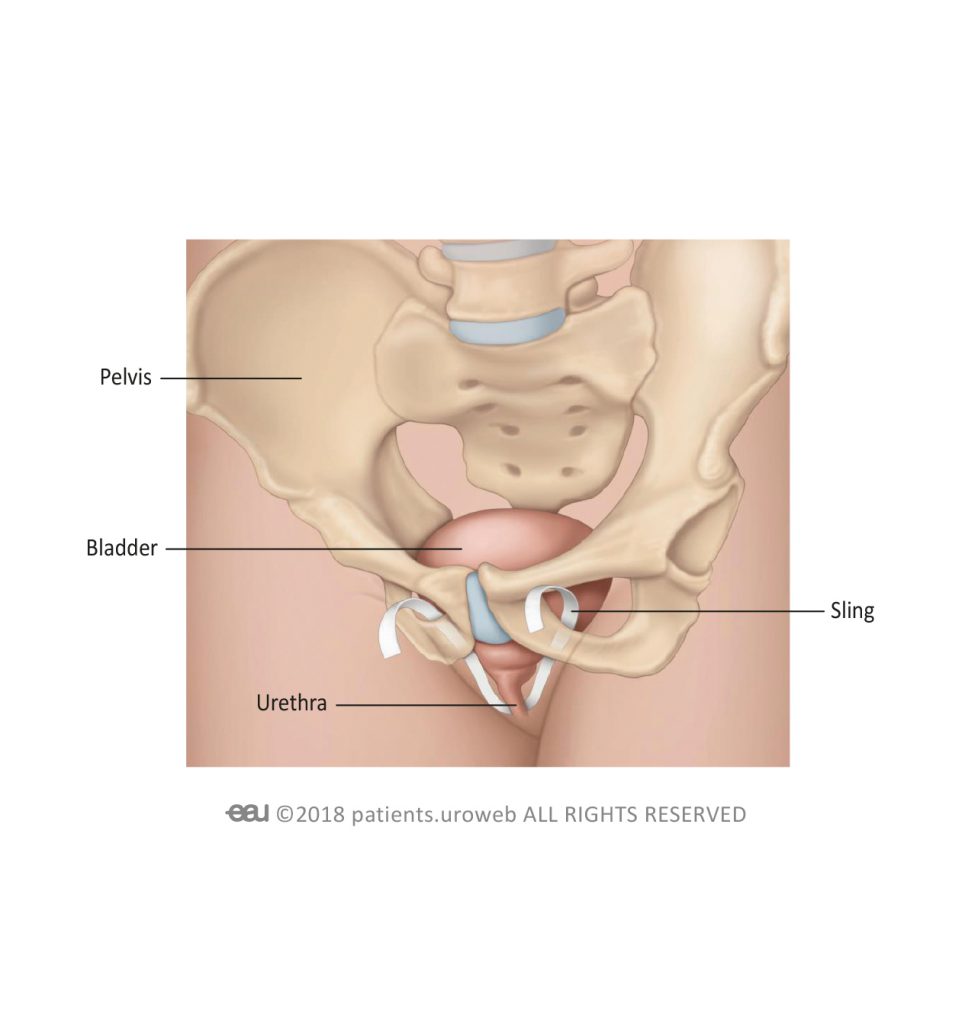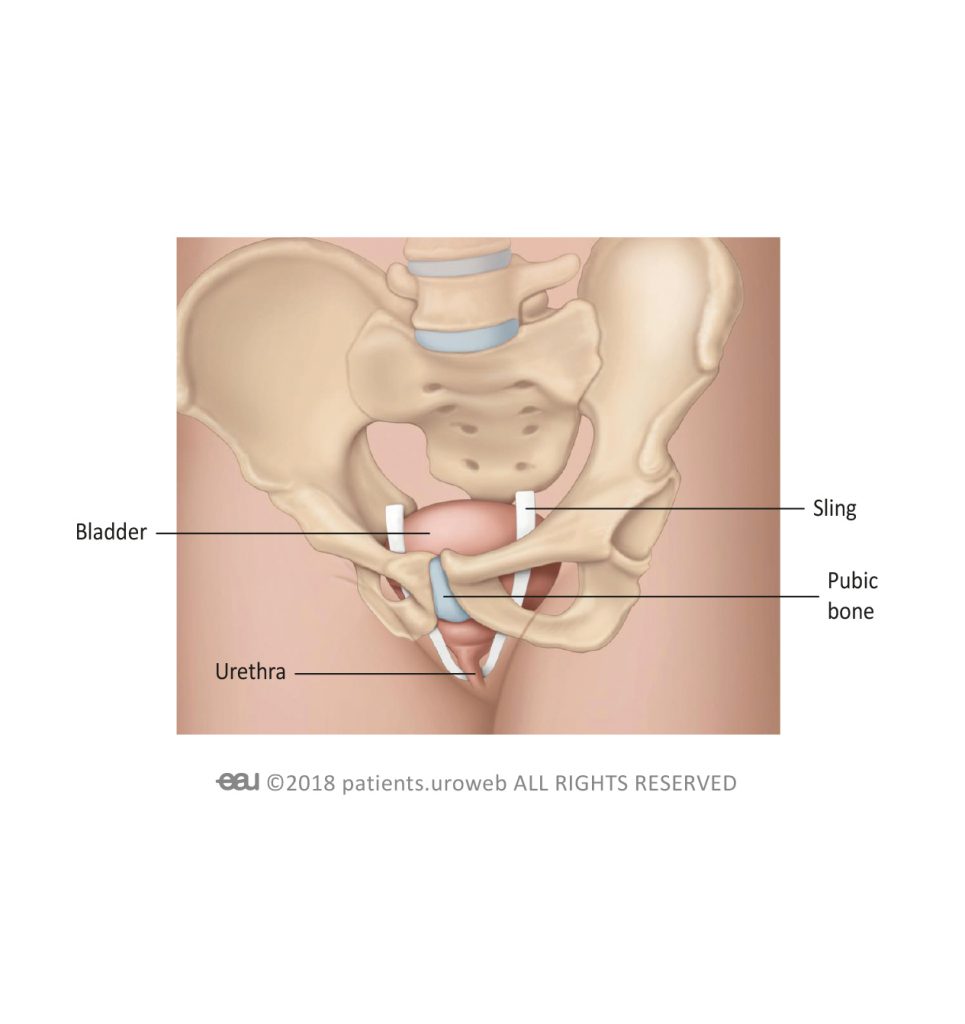Midurethral sling
Implantation of a midurethral sling is the standard surgical treatment for stress urinary incontinence (SUI) in women. The urethra is the tube through which urine is transported from the bladder to the outside. The sling is placed under the mid-urethra to support it. This helps the bladder neck and urethra better resist pressure.
Different types of slings are available. Differences include:
- Surgical approach: retropubic or transobturator insertion.
- Retropubic and transobturator slings are equally effective, and complications for both are low.
- A retropubic sling is inserted directly behind the pubic bone, near other organs. As a result, this type of sling may have a higher risk of complications during surgery than transobturator insertion. The risk that you may be unable to empty your bladder is higher using a retropubic route when compared to transobturator slings.
- A transobturator sling is inserted through the groin, away from other organs. As a result, this surgery may be safer, but there is a higher risk of pain (including during intercourse) over the long term.
- Material: synthetic or biological, elastic or tight, serrated or smooth
- Shape: differences in length and width
The type of sling recommended for you depends on your individual needs. It also depends on the availability of different types of slings at your hospital and your surgeon’s experience with them.
When should I consider a midurethral sling?
Slings improve SUI in most cases. If treatment is successful, the effect is generally long-lasting. The surgery is done through small incisions (minimally invasive). The operation and the hospital stay are short and complications are low.
A sling is the most commonly recommended option for the treatment of SUI. It can also be an option for treatment of SUI if previous surgery didn’t work.
How are midurethral slings implanted?
The procedure is done under anaesthesia, which is the use of drugs to block nerve function and pain. Anaesthesia can be:
- Local: Drugs are injected in the area of the body where surgery will be done.
- Spinal: Drugs are injected into the spinal column to block pain via the nerves.
- General: Drugs are given intravenously to make the patient asleep.
Steps:
- The bladder is emptied. The surgeon will insert a catheter to make sure that your bladder is completely empty during surgery.
- A small incision is made in the front of the vaginal wall to insert the sling. The two ends of the sling are put in position on both sides of the urethra, shaping the sling like a hammock.
- The surgical guides are inserted. The sling is placed using special instruments. For retropubic slings, the ends are cut just above the pubic bone. For transobturator slings, the ends are cut in the groin (Fig. 1 and 2).
- The inside of the bladder may be examined (cystocopy). The surgeon might look through your urethra into your bladder using a very small camera to rule out an injury to the bladder due to the sling placement. It is done depending on the type of midurethral sling and technique used.



